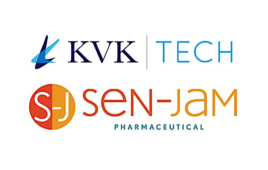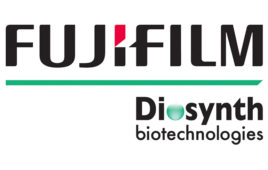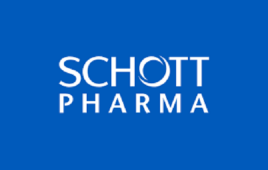Recovering solvents in the pharmaceutical industry could become a greater priority as the trend toward potential savings continues.
Though the chemical processing industry has been reaping the rewards of recovering their own solvents for some time now, the pharmaceutical industry at large has neglected to capitalize on these benefits which can significantly improve their bottom line.
Furthermore, when pharmaceutical companies keep their solvents on site, they minimize the expenses of working with a toll processor who will recover the solvents, or a contractor who will incinerate the solvents, and avoid the cost and liability associated with shipping hazardous chemicals offsite.
When using a toll processor, the threat of a company’s solvents being contaminated is ever-present, since the toll processor’s equipment is multi-purposed. Therefore, along with being less expensive, recovering solvents on site leads to better quality control.

(Credit: All images courtesy Koch Modular Process Systems)
Green Movement Forces Deeper Examination
With today’s ever forward-looking attitude towards combating the effects of climate change, pharmaceutical companies are seeking to examine their entire supply chain, including internal manufacturing processes, to highlight potential areas where re-use and recycling could be applied, and positively affect sustainability and “green” strategic plans.
Recovery and recycling of solvents has always been simply one more “box to check,” situated inside the less glamorous corners of a facility producing high margin pharmaceutical products. Solvents are a vital part of the manufacturing process and in many cases their recovery is usually handled by sending the waste solvents to an outside toll processor for clean-up and return.
Another option for the pharmaceutical company is to have the waste solvents incinerated. But with carbon footprint and sustainability efforts underway at most Big (and even many small) pharmaceutical companies, sending and returning thousands of gallons of waste solvents over the roadways to be processed or incinerated adds to a company’s carbon footprint calculation fairly aggressively.
Today’s corporate sustainability goals, often mentioned in annual reports, highlight the industry’s desire for “zero waste,” and re-use/recycle efforts to lower the carbon footprint. Often, when a solvent recovery system is being furnished, a wastewater stripper is paired with it and the solvents that are stripped out of the wastewater can then be added to the waste solvent feed to the recovery system, providing an additional benefit.
These public facing strategies are pulling together facility-based engineering teams, corporate engineering and public-facing corporate executive teams in a manner unprecedented in recent pharma manufacturing history.
Current Waste Solvent Cleanup Approaches
Let’s briefly examine a few issues encountered with current methods for recovering waste solvents.
Toll Processor
Liability and contamination are two of the major concerns when companies select toll processors to recover solvents. One of the most concerning is that solvents could be returning to the facility technically meeting spec, but if the toll processor’s equipment is multi-purpose, whereby multiple companies waste is being processed in the same tanks and separation systems, one pharma company’s solvent could be contaminated by minute quantities of other materials.
Over time, these minute impurities can cause quality issues. Quality control is always more difficult when an outside vendor is involved in the process.
Liability is also a concern. While waste solvents are being transported over public roadways or rail systems to and from the toll processor’s facility, the company is liable for any roadway or rail spills.
Burning
One method of choice for waste solvent disposal is incineration. Although this method can actually be quite effective, the pharmaceutical industry is understandably hesitant about the loss of valuable resources and the energy that then has to be expended to produce new solvents.
Virgin Solvent Purchases
And what about solvent supply chain issues? Many companies find that over time, due to a buildup of small quantities of impurities from their own process or recovered solvent from toll processors multi-use equipment mentioned above, they must purchase new virgin solvent.
Some have instituted a policy of purchasing X% virgin solvent every few months, or years. But this generates a new set of supply chain issues. What if a supplier becomes unavailable or unreliable? And how much are companies spending on re-purchase of virgin solvent? These costs become especially burdensome when waste solvents are incinerated.
When manufacturing high-margin API products, the natural emphasis is on optimizing the main production processes that drives the higher margin products. As a result, solvent recovery has historically fallen under their radar.
In addition, because the unit operations used in solvent recovery — distillation, liquid-liquid extraction, and specialized techniques like azeotropic or extractive distillation — are not unit operations commonly found in the traditional pharmaceutical facility, engineering departments are less likely and perhaps less equipped, to design such systems.

Increasingly, larger pharma companies do recognize the many drivers discussed here, for initiating an economic evaluation around solvent recovery system design. Such systems, using a combination of extraction and distillation columns and associated processes, are often an expense-saving project which will provide truly on-spec solvent for re-use in the process. To summarize:
Major Benefits from Recovering Solvents
1. Reduced Operating Expenses
- Significantly reduced purchases of expensive replacement solvents
- Reduced cost of hazardous waste disposal
- Reduced cost versus shipping spent solvents to a toll processor for recycle
- Reduced inventory requirements of expensive solvents
2. Improved Environmental Impact
- Green Approach — recovery and recycle of solvents means preserving and restoring valuable resources vs. disposal and/or disintegration of solvent mixtures.
- Removal of solvents from aqueous wastes often accompanies customer’s objectives, thereby purifying waste waters in the process.
- Compliance with EPA regulations
3. Quality Assurance
When compared to paying a toll processor to recover solvents, self-recovery in dedicated equipment assures you of on-spec material with no foreign substances.
4. Supply Chain Assurance and Operations Continuity
When solvents are not delivered on time or are unavailable due to supply shortages, strikes or supplier outages, the pharmaceutical company who recovers their solvents can continue to manufacture product, with no interruptions.
5. Reduced Risks of Downstream Liability for Disposal
- Mitigates potential liabilities for disposal of solvents
- Liability protection from solvent shipping and handling accidents

A Process for Evaluating Solvent Recovery Viability
It is important to approach the evaluation of a solvent recovery project methodically. Companies who follow the steps below, to understand all the factors that affect design and costs, and who evaluate the risks and rewards of an investment in a solvent recovery system, will be able to confidently support a project which will quickly pay for itself.
Step #1: Critical Groundwork: Establish Preliminary Design Basis
Laying the groundwork here is an absolutely critical first step:
1. Determine the composition and quantities of solvent-laden streams, including all impurities, even those in low (ppm) concentrations.
2. Are streams produced in batch fashion?
3. Is there a range of compositions expected?
4. Determine composition and quantity of aqueous waste streams. Waste water streams are often treated alongside of solvents in a complete system approach.
5. Are dissolved or suspended solids present?
6. Determine purities of recovered solvents required. These are usually set by the virgin solvent purity specifications.
7. What utilities are available? This part of the evaluation will help frame the operating conditions for the recovery process. What are the steam supply pressure(s)? What are the hot oil supply and return temperatures? What about cooling waster supply and return temperatures, and chilled water or refrigerated coolant stream supply and return conditions?
Step 2: Conceptual Design: Preliminary Evaluation of Recovery Processes
In this phase of conceptual design we literally begin to visualize and develop the process(s) that can be employed to recover the solvents. In general, distillation is and should be evaluated first, since it is simplest technique. Often, liquid-liquid extraction is utilized in combination with distillation to break azeotropes or remove higher boiling impurities from aqueous wastes. The sequence of steps used in the conceptual design of the process are:
1. Obtain physical properties of all compounds in solvent streams such as normal boiling points, molecular weights, vapor pressure vs. temperature, solubility in water, liquid density, melting point , etc.
2. Gather all VLE and LLE data, lists of azeotropes. These data describe the relationships between the pairs of compounds that are to be separated and determine how difficult the separation is.
3. Measure VLE and/or LLE (if necessary).
4. From experience, conceptualize process(s) that can be employed: Distillation? Liquid Liquid Extraction?
5. Computer modeling of candidate processes to determine number of steps, yields, purities, energy requirements.
6. Evaluate materials of construction for equipment.
7. Prepare a preliminary flow sheet and/or P&ID.
8. Calculate rough sizes for equipment.
9. Prepare rough budgetary capital costs and operating costs for various process options.
10. Evaluate risks of all candidate processes.
11. Make a process(s) recommendation, based on the above study.
12. Estimate cost and schedule for pilot scale testing program (if required).
Considerable expertise in separations technology is required to get through Steps 2 through 5, and there are few companies that have the body of data and experience, [much of which has been generated in the Koch Modular pilot plant (next step) in Houston, TX over the last 25 years] to solve the more difficult separations challenges.

Sometimes the solvent recovery application is straightforward, but more often than not the separations are challenging and the experience of the process engineers will make a large difference in the solution that is eventually proposed. With solvent mixtures, there can be azeotropes involved. Mixed solvents often have water and salts and other impurities mixed in. Sometimes water will form an azeotrope with a solvent, or two solvents form an azeotrope(s), or small amounts of impurities cause other unexpected challenges such as component trapping.
Even with talented and experienced chemical engineering staffs, these azeotropes and the knowledge it requires to understand how to break them, often means that even the most experienced engineers may simply have not faced this type of challenge before.
Step #3. Eliminating Risks: Pilot Scale Testing
If pilot plant testing is required, drum quantities of waste solvent streams will be gathered and if necessary, spiked with quantities of desired impurities to achieve the worst case design composition. Analytical procedures need to be developed to pilot test the solvent streams and furthermore, additional procedures need to be considered to evaluate the purities of streams produced during the pilot tests.
Computer modeling will drive the development of operating and equipment conditions for the pilot test trials. An important reason for “live” pilot testing is the ability to observe physical behavior such as possible emulsification, foaming, and fouling characteristics. Once the pilot tests produce recovered on-spec solvent, this is usually sent back to the client for their own evaluative testing, where the active pharmaceutical is made using the recovered solvent (often referred to as a “use test”).
Step #4 – Reality Check: Compare Pilot Test Results to Initial Recommendations
This reality check may seem obvious, but there are nuances involved in the comparison of pilot test results to the initial recommendations. Answering the yield and purity questions is only the first step. Utility costs and materials of construction (temperature and corrosion may be a consideration) and the observation of the physical behavior of the columns may result in a different column design choice.
This is the step that decides the first level of feasaibility and identifies the risks for moving ahead with a solvent recovery project. Some examples, such as the THF case mentioned below, make the decision more straightforward, simply because the virgin solvents are so expensive.
Example: Expensive Solvent Recovered
One pharmaceutical firm used THF (Tetrahydrofuran) in its process and had a waste solvent stream composed of THF, water, acetone, and methylene chloride, plus a handful of other solvents. A slip stream of this waste solvent stream was obtained and we followed the steps outlined in this article.
It was a difficult recovery, which ultimately took four distillation columns in series to accomplish, but was able to show a strong economic case for recovering dry THF and re-using it in the process. Because THF was an expensive solvent (approximately $1.50/pound) the economics for this distillation system was well worth the project expenditure for the pharmaceutical company.
Conclusion
Recovering solvents in the pharmaceutical industry could become a greater priority as the trend towards looking more deeply at the pharma manufacturing process for potential savings continues. Because there is a considerable amount of expertise required for the types of complex separations steps that may be necessary to recover solvents, to meet the required purity specs necessary for re-use, it may make sense to ask for outside expertise to suggest options for economical recovery systems. If designed correctly, solvent recovery can save money and in addition, help achieve sustainability goals which are increasingly paramount in our industry.
About the Author
Tom Schafer is a chemical engineer with 41 years of experience in process design, operations management, cost estimating, plant layout, and sales & marketing, with sSpecific expertise in equipment design, including distillation, heat transfer, fluid flow, and process control. Koch Modular Process Systems designs and constructs mass transfer systems for the processing industry.




